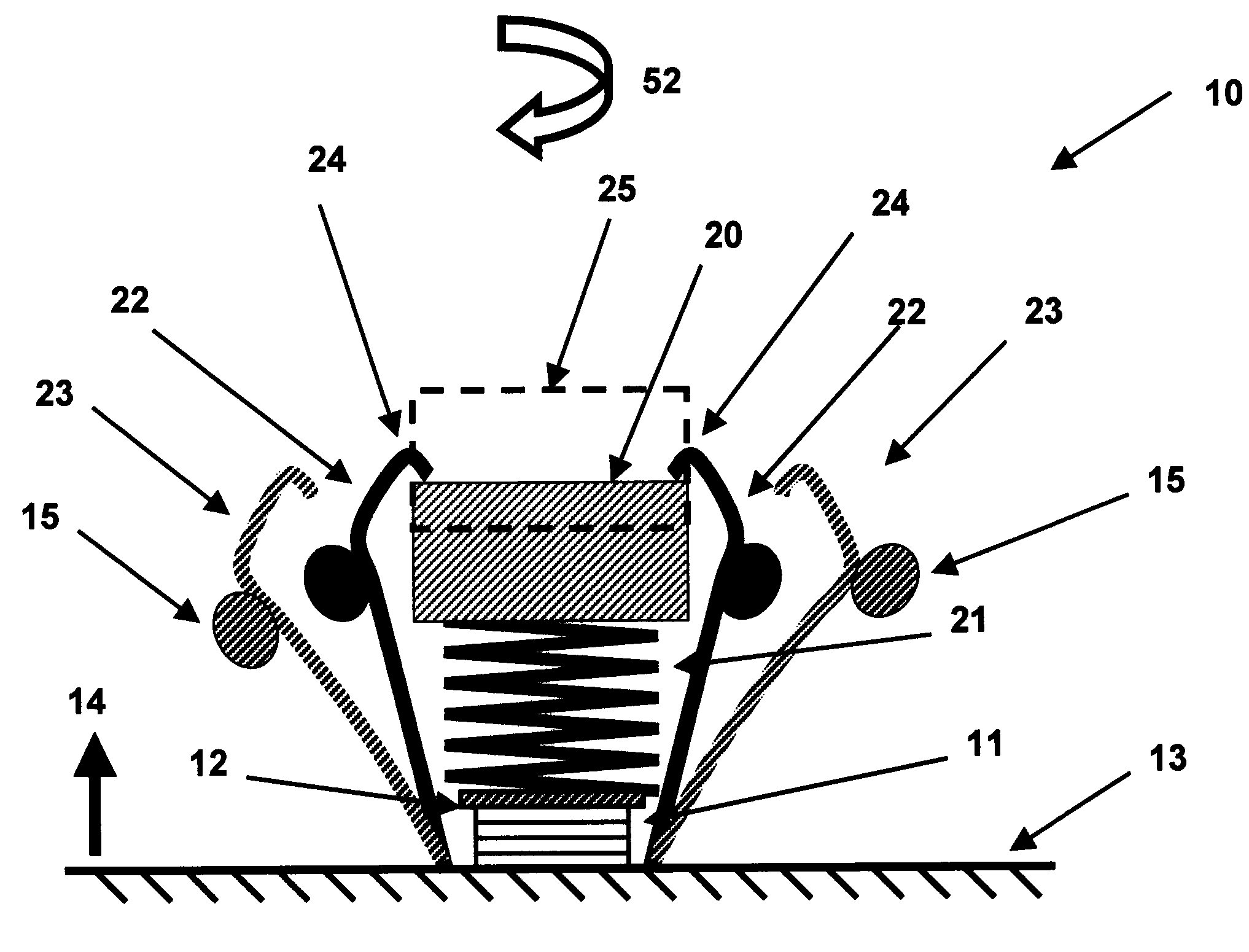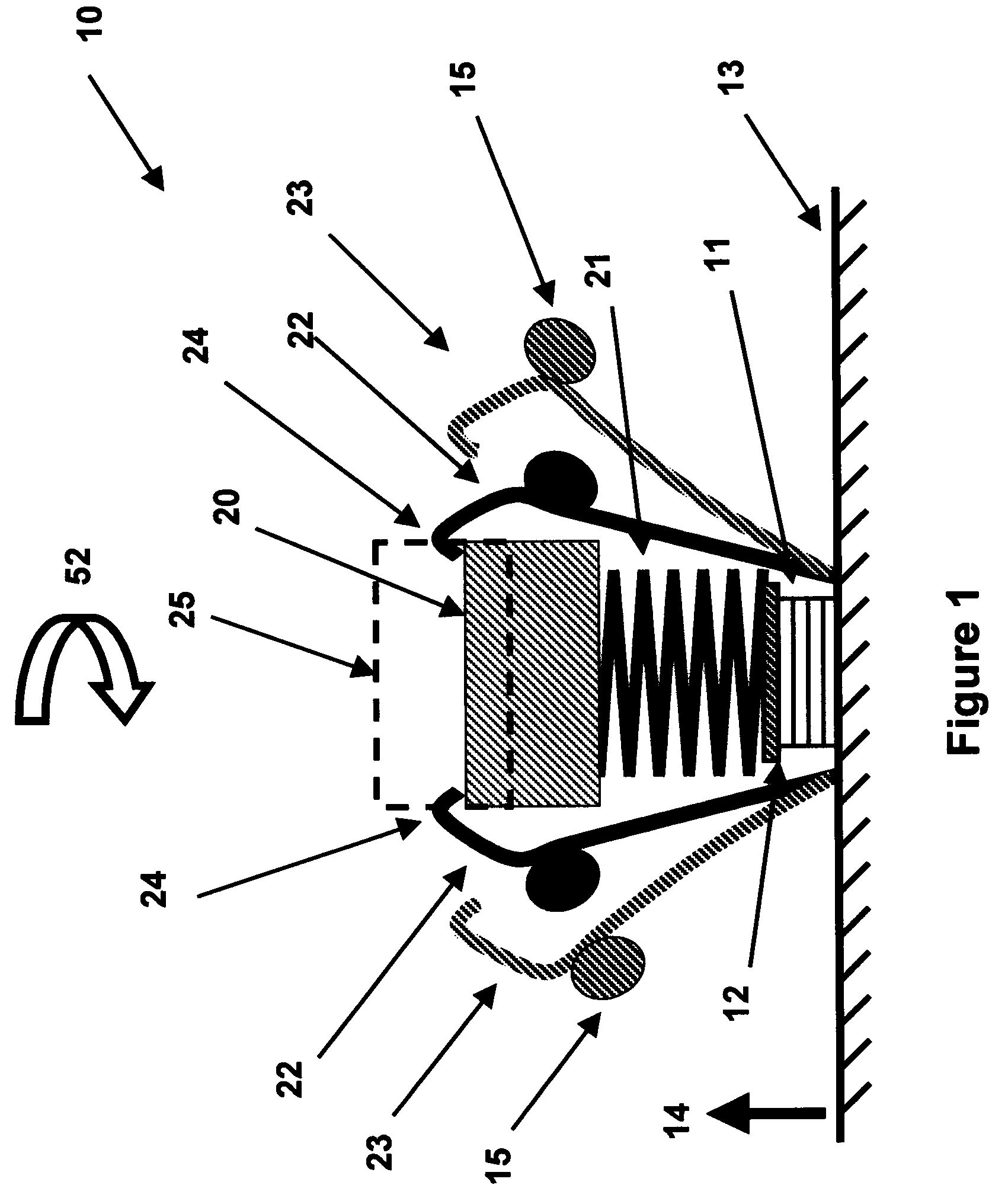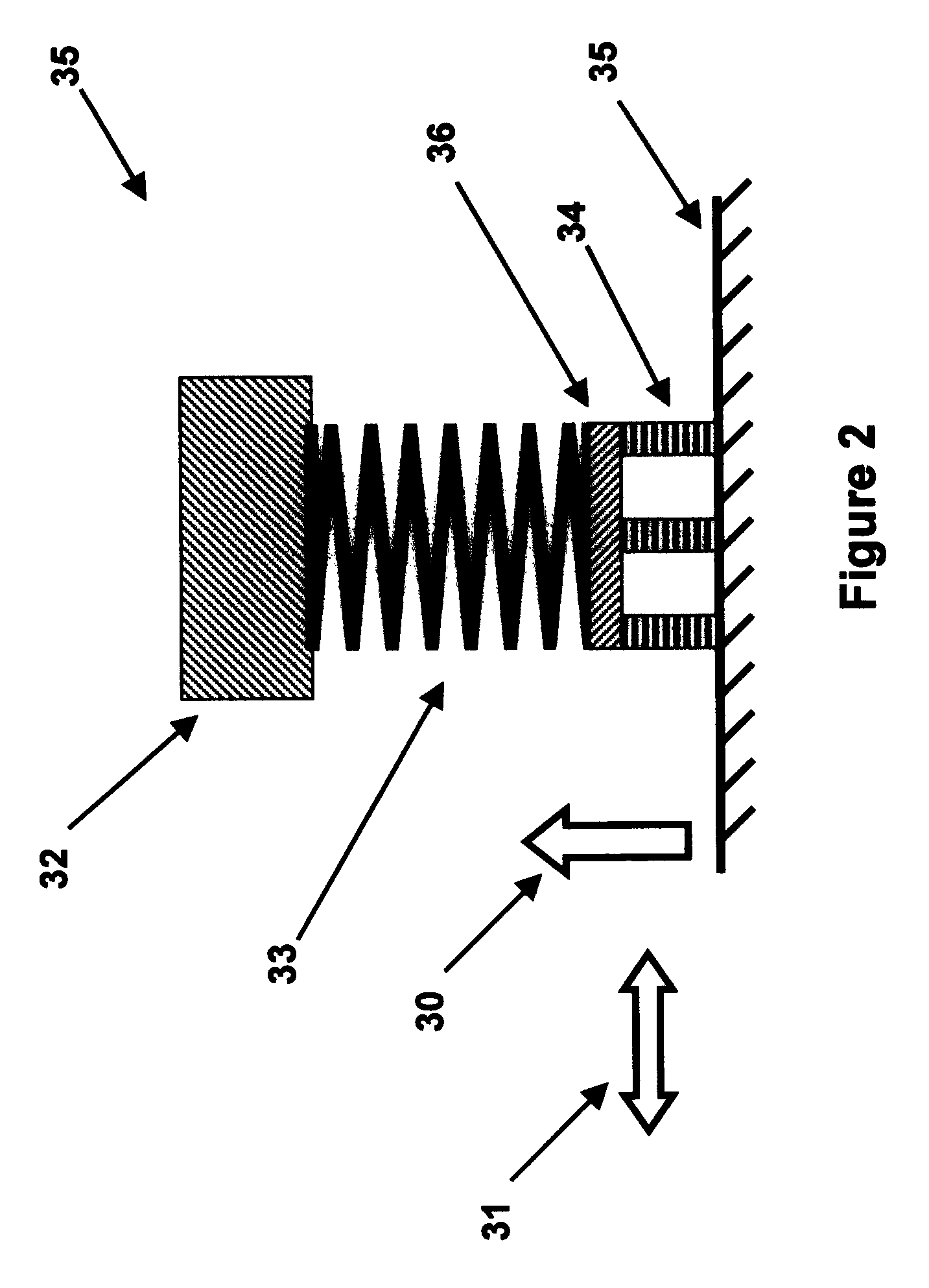Methods and apparatus for mechanical reserve power sources for gun-fired munitions, mortars, and gravity dropped weapons
a technology of mechanical reserve power source and gun-fired munitions, which is applied in the direction of generator/motor, electric fuze, ammunition fuze, etc., can solve problems such as vibration of power sour
- Summary
- Abstract
- Description
- Claims
- Application Information
AI Technical Summary
Benefits of technology
Problems solved by technology
Method used
Image
Examples
embodiment 35
[0051]In the embodiment shown in FIG. 1, a single piezoelectric stack is used to convert mechanical energy to electrical energy. Alternatively, the piezoelectric element 11 can consist of more than one (preferably stack type) elements as shown in FIG. 2. In the schematic of FIG. 2, the locking elements 22 (FIG. 1) are not shown. In this alternative embodiment 35, the spring element 33 is also preferably attached to the piezoelectric elements 34 via a substantially rigid element 36 to distribute the forces applied by the spring element 33 more uniformly to the piezoelectric elements 34. The piezoelectric elements 14 are in turn attached (directly or via other substantially rigid elements (not shown) to the structure of the projectile 35.
[0052]During the firing, during the flight and during the impact at the terminal point of the flight, the projectile is subjected to axial and radial accelerations in the direction of the arrows 30 and 31, respectively, and rotary accelerations about ...
embodiment 40
[0057]In the embodiment shown in FIG. 1, the mechanical potential energy is stored in the spring element 21 of the mechanical reserve power source 10 by preloading the spring element in compression. Alternatively, the mechanical reserve power source may be designed such that the mechanical potential energy is stored in a spring element which is preloaded in tension. The schematic of such an embodiment 40 is shown in the schematic of FIG. 3. The mechanical reserve power source 40 is considered to be mounted to the structure 41 of a gun-fired projectile, in which it is intended to start to generate electrical energy upon firing. The firing acceleration is considered to be in the direction of the arrow 42. The mass element 43 is attached to the piezoelectric stack 44 via the spring 45, via an intermediate rigid element 46 to more uniformly distribute the force applied by the spring element 45 to the piezoelectric stack 44. The intermediate element 46 and the mass element 43 can be inte...
embodiment 10
[0062]In general, the locking mechanisms are preloaded in the direction opposing their release. For example in the embodiment 10 of FIG. 1, the locking elements 22 (acting as flexural spring element) are preferably preloaded such that normally they would press against the mass element 20. The purpose of this preloading and the threshold force for the release of the locking element 22 is to prevent accidental release of the locking mechanism such as in the case of accidental drops or other unintended acceleration or spinning of the projectile 13.
[0063]The amount of preload of the springs 21 and 45 of the mechanical reserve power sources of the embodiments of FIGS. 1 and 3 and the locking mechanism release threshold can be selected such that during accidental dropping of the power source and / or projectile (device) in which they are mounted, the springs 21 and 45 do not transmit any significant amount of force to the piezoelectric stack elements 11 and 44, respectively, thereby no sign...
PUM
 Login to View More
Login to View More Abstract
Description
Claims
Application Information
 Login to View More
Login to View More - R&D
- Intellectual Property
- Life Sciences
- Materials
- Tech Scout
- Unparalleled Data Quality
- Higher Quality Content
- 60% Fewer Hallucinations
Browse by: Latest US Patents, China's latest patents, Technical Efficacy Thesaurus, Application Domain, Technology Topic, Popular Technical Reports.
© 2025 PatSnap. All rights reserved.Legal|Privacy policy|Modern Slavery Act Transparency Statement|Sitemap|About US| Contact US: help@patsnap.com



